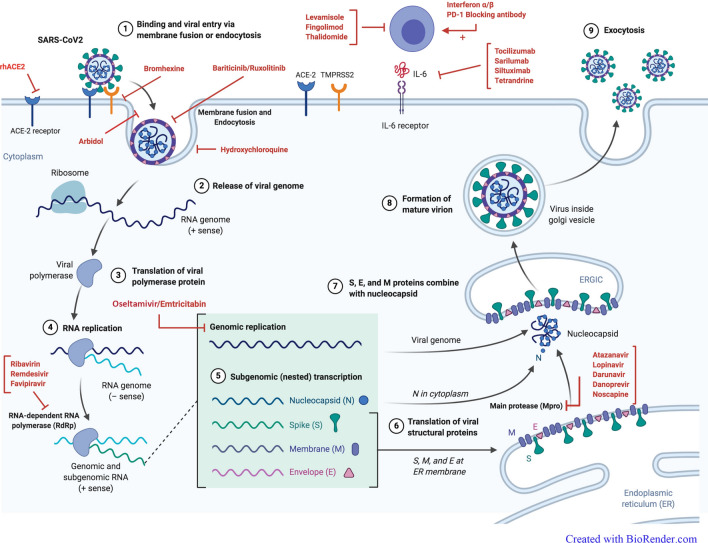Fig. 1.
The mechanism of actions of different drugs against COVID-19. The figure illustrates the probable site of drugs effect during SARS-CoV2 infection including (1) binding and viral entry via membrane fusion or endocytosis (which are blocked by rhACE2, Bromhexine, Arbidol, Hydroxychloroquine, Ruxolitinib, and Baricitinib), (2) release of the viral genome, (3) translation of viral polymerase protein, (4) RNA replication, (5) genomic replication (which is inhibited by Oseltamivir and Emtricitabine), (6) translation of viral structural protein such as main proteases (which is inhibited by Atazanavir, Lopinavir, Darunavir, Danoprevir, and Noscapine), (7) capsidation and RNA-dependent RNA polymerase (which is inhibited by Remdesivir, Favipiravir, and Ribavirin), (8) formation of the mature virion, (9) exocytosis. Other recommended drugs act on immune responses such as Tocilizumab and Siltuximab (via inhibition of IL-6), interferon-alpha, and beta (as the immunoenhancement agents), Fingolimod and Thalidomide (as the immunomodulating agents). The figure is “Created with BioRender.com”

